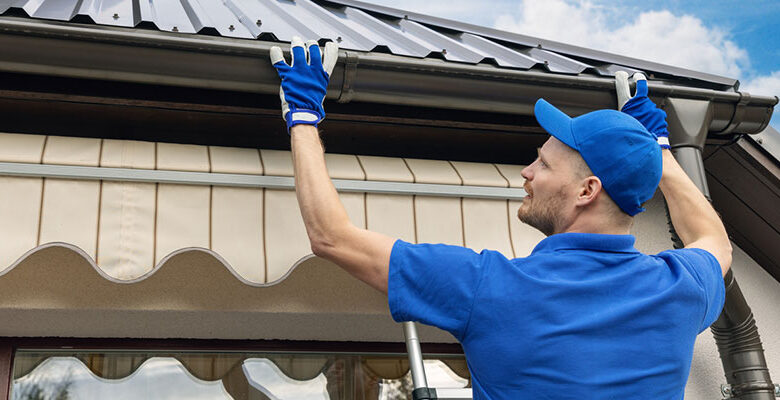Your Roof’s Silent Partner: Why Gutter Planning Should Never Be an Afterthought

Walk past any home, and it’s easy to focus on shingles, flashing, or even the slope of the roof. But the unsung hero in every weather-proof system is hanging just under the edge—gutters. While roof replacements or repairs often get all the attention, ignoring your gutter system can create a ripple effect of damage throughout your home.
Whether you’re building from the ground up, expanding with new construction roofs, or simply tackling repairs, integrating gutters into your planning is crucial. At first glance, gutters might seem like an accessory—an afterthought. In reality, they’re your roof’s first line of defense against long-term damage.
What Happens Without Gutters?
Imagine a heavy storm rolling in. Without gutters, all that rainwater has nowhere to go but straight down. It cascades off your roof, erodes the soil around your home, and splashes against siding and foundations. Over time, this can cause leaks, cracks, and structural instability.
Even the most advanced roofing material or flawless installation can’t protect a home from water if the drainage system is ignored. Proper gutter installation keeps water moving away from critical areas, preserves landscaping, and even reduces the risk of foundation flooding.
The Gutter-Roof Relationship
Your gutter system and your roof aren’t separate systems—they’re part of the same ecosystem. When gutters are clogged, undersized, or improperly pitched, they back up. That backup forces water under the shingles and into the underlayment. Once there, it doesn’t take long for rot to set in.
This is especially problematic with older roofs or homes undergoing partial roof repairs. A small drainage issue can turn into a major interior leak, even when the roof looks intact from the outside. That’s why professionals in the field, such as Mike Ragan Roofing, often emphasize holistic planning—roofs and gutters should be considered in tandem, not as separate projects.
Matching Gutters to Roofing Systems
All gutters are not created equal. Just like roofing materials, gutters come in different sizes, styles, and capacities. The pitch of your roof, the square footage of your home, and your region’s average rainfall all influence which gutter system works best.
For Roof Replacements:
When you replace a roof, it’s often wise to assess the gutter system at the same time. The weight of old gutters can damage new shingles during installation if not handled carefully. Moreover, a fresh roof deserves proper drainage to preserve its longevity.
For Addition Roofs:
Smaller additions—such as porches or guest suites—require scaled gutter systems. It’s not just about installing shorter sections. It’s about managing runoff from the new area and ensuring it doesn’t overwhelm the existing drainage.
For New Construction Roofs:
Planning gutters early in new builds means ensuring proper downspout placement, pitch, and even underground drainage routing. It’s not only efficient—it avoids the common issue of retrofitting systems around architectural challenges.
Metal Roofing and Gutter Compatibility
Metal roofs are rising in popularity due to their durability and modern aesthetic. However, they present specific challenges for gutters. Rain and snow slide off metal roofs faster, which means your gutters must be securely attached and capable of handling high-volume water flow.
One overlooked issue is ice. Snow sliding off metal roofs can push gutters out of place or damage fascia boards. Installing snow guards or diverters can prevent this, but again—it requires integrated planning. Gutter design should adapt to the unique features of metal roofing, not compete with them.
Preventative Maintenance Programs Include Gutters Too
Too often, preventative maintenance programs focus exclusively on shingles, flashing, and attic inspections. Gutters may only get a glance—if that. But those who incorporate gutter cleaning and alignment checks into their routine maintenance avoid some of the most common and costly home issues.
Leaves, bird nests, and granules from shingles can all cause clogs. Over time, sagging, rust, or seam leaks develop. These are all preventable problems. With regular inspections and timely gutter adjustments, homeowners can extend the life of their roof and their home’s structure.
Beyond Function: Aesthetic Integration
Modern gutters aren’t just about utility. With options like seamless gutters, powder-coated finishes, and custom downspouts, they can complement a home’s exterior. Matching the trim color or roofline pitch adds visual polish, especially during roof replacements or when constructing addition roofs.
A poor gutter installation stands out—but so does a thoughtfully designed one. Homeowners investing in exterior improvements like siding or new construction roofs should consider gutters as part of their visual and functional design plan.
Seasonal Challenges and Gutter Preparedness
Different seasons bring different threats to your roof and gutters:
- Fall: Leaves and debris quickly clog open gutters, leading to overflows.
- Winter: Ice dams form if gutters are full of snow and water freezes before draining.
- Spring: Heavy rains test your system’s capacity—any leaks or clogs are exposed.
- Summer: UV rays can weaken some materials, making older gutter systems brittle or warped.
Each season is an opportunity to inspect, clean, or upgrade your gutters. Especially for homeowners in storm-prone areas, proactive planning is non-negotiable.
Signs It’s Time to Reevaluate Your Gutters
If you’re unsure whether your gutter system is doing its job, here are warning signs to look for:
- Water stains on fascia or siding
- Pooling water near the foundation
- Sagging gutters or visible seams
- Mold or mildew in attic areas
- Eroded landscaping directly under eaves
These subtle signs often appear long before a full-blown roofing issue develops. Catching them early could save thousands in future roof repairs.
Planning for the Long Haul
A high-quality roof is a major investment. But its effectiveness is closely tied to the performance of your gutters. When building, repairing, or expanding a roof, the smart move is to incorporate a complete drainage strategy from day one.
From gutters to downspouts to underground drains, each piece works together to keep your home dry and damage-free. And while it’s easy to prioritize the more visible elements of a roofing project, don’t underestimate the role gutters play behind the scenes.
At Mike Ragan Roofing, the emphasis on structural cohesion helps homeowners see the big picture—because every component matters, from the ridge cap to the ground runoff.




